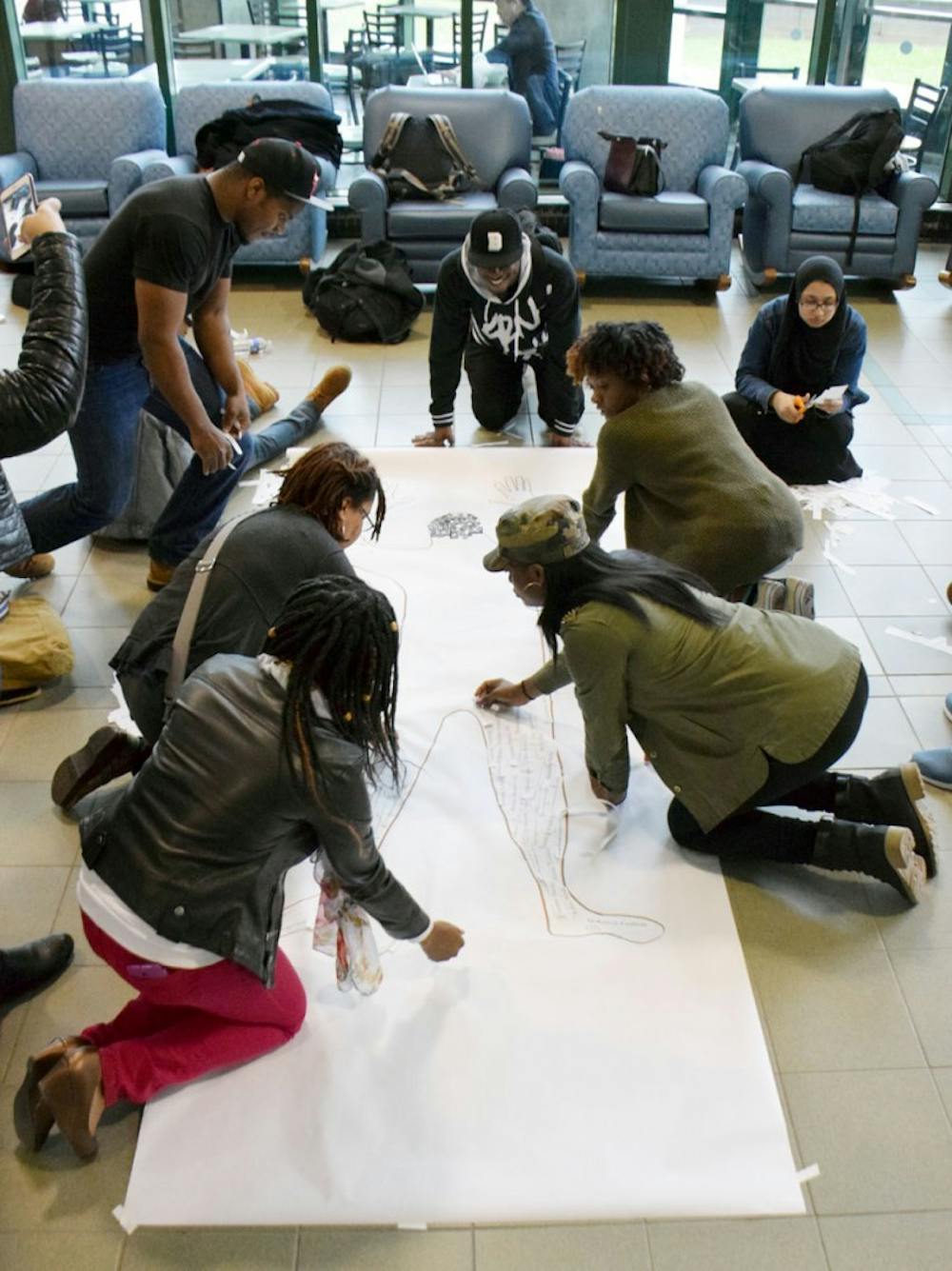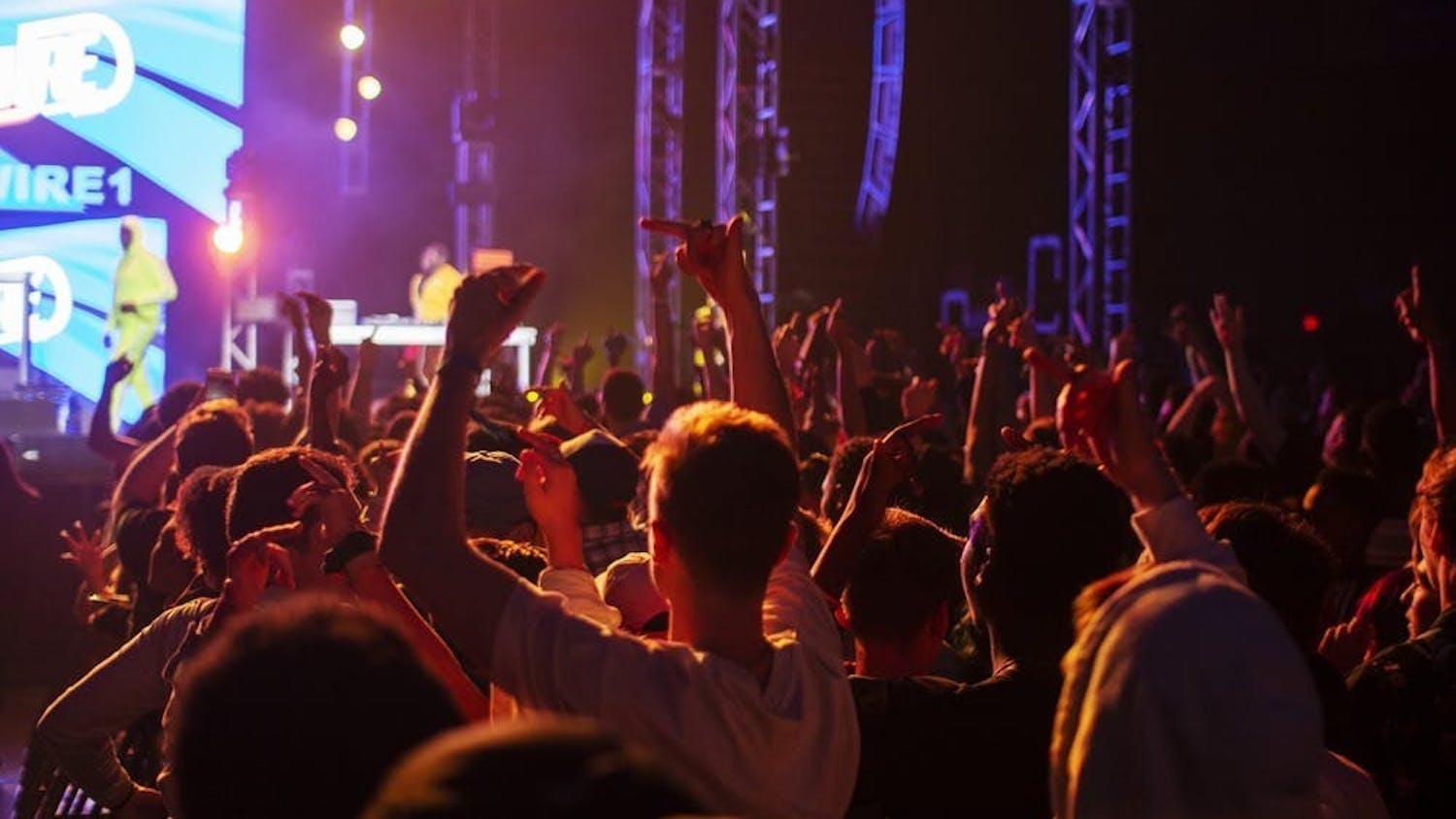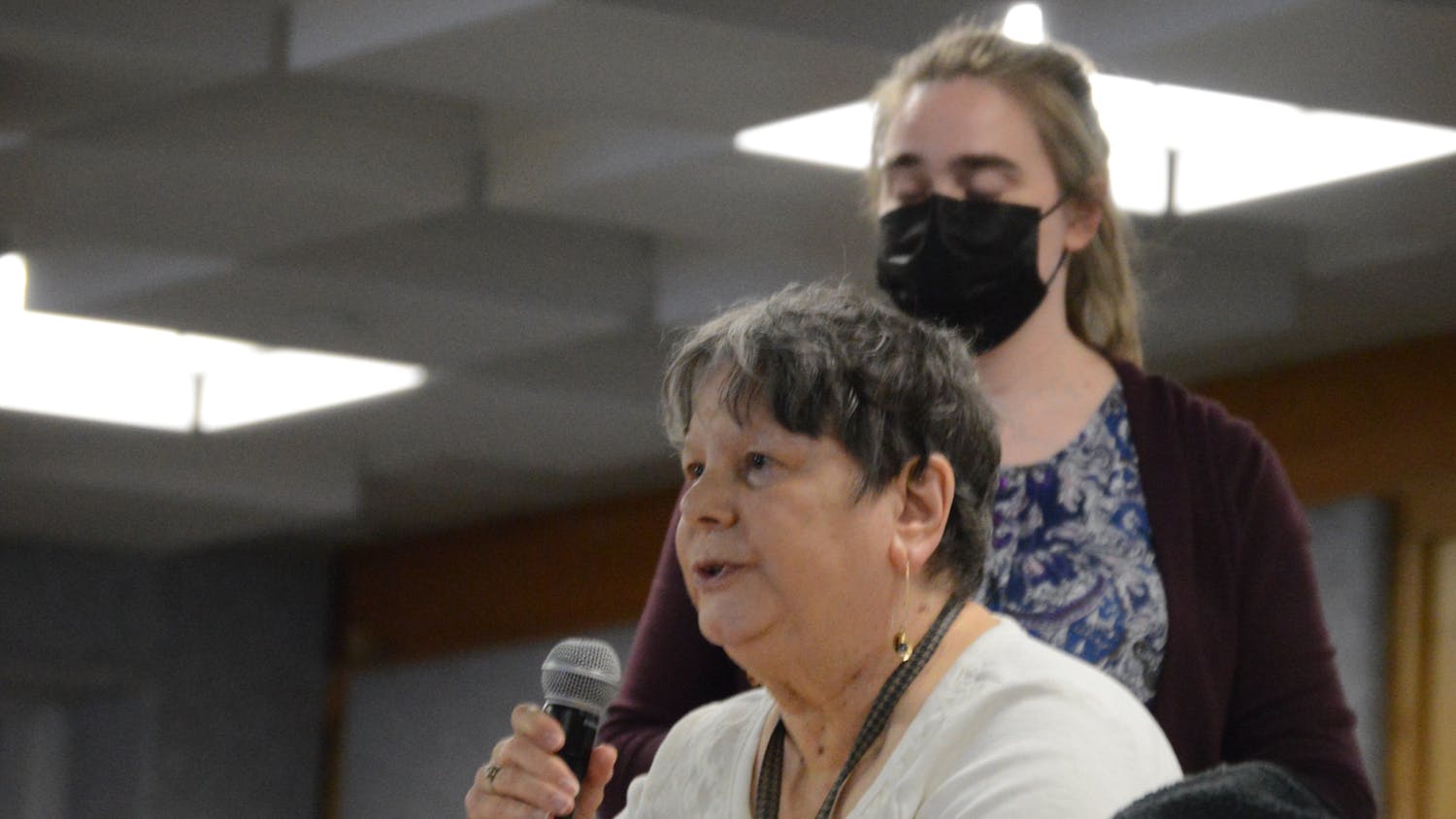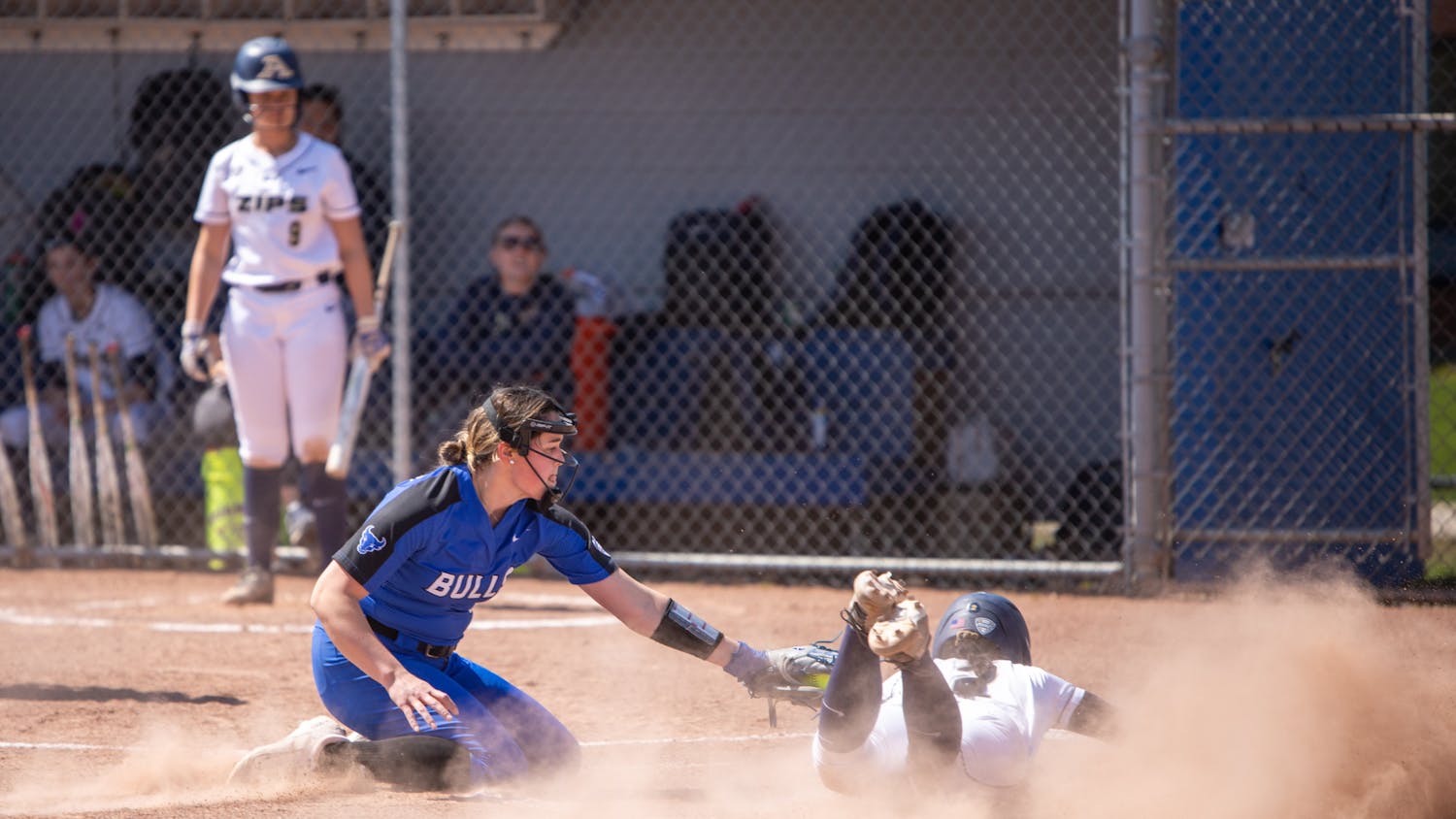“‘I love you, too,’ Sean Bell. Nov. 25, 2006.”
After the words – which were read aloud on a platform in the Student Union – the sound of gunshots rang out.
“I love you, too” were Bell’s last words.
The gunshots came after only some of the many names that were read of people who were killed by police. The gunshot sound was met with mixed reactions from the crowd.
On Monday in the Student Union lobby, professor Toni Pressley-Sanon’s African American studies 425 class: “Liberation Struggles”held an art showcase entitled: “Art for Justice” to increase campus awareness of police brutality across the United States. Students in Pressley-Sanon’s class planned the show.
“[Recent protests] in Baltimore, for example, that’s a response to people being tired,” said Isaiah Davis, a junior philosophy and English major. “It’s the embodiment or the manifestation of: ‘We’re tired and we don’t know what to do and this is all we have left.’”
Art for Justice is a more peaceful means, Davis said.
Following the death of Freddie Gray, who was beaten into a coma by Baltimore police and later pronounced dead from his injuries, protesters in Baltimore took the streets and, in some cases, clashed with police.
Tensions in the city are high – while some protests are peaceful, other clashes are violent.
But Monday’s event aimed at responding to the high-profile deaths in a creative way.
Davis said people should utilize their talents, passions or hobbies in a different form. He was hoping to open that gateway to students.
“I was doing a lecture in class about the Black Power Movement, and the day of the lecture was actually the day after the Walter Scott incident,” Davis said. “[Our class] figured that something had to be done.”
Scott was fatally shot on April 4 after a daytime traffic stop in North Carolina. Officer Michael Slager was charged with murder after a video surfaced that showed him shooting Scott in the back while he was fleeing.
Professor Pressley-Sanon and her class used the showcase as a creative outlet for students to voice their concerns.
Pressley-Sanon said the class didn’t see anything being done on campus besides “a few talks that historicized violence against Black men in particular.”
She wanted to plan an event that was student-led and something students took ownership of.
“Just talking to my students, mainly African-American male students, I realized that they really didn’t have an outlet or a place to talk about what happened,” Pressley-Sanon said. “It’s very scary, and to not have some sort of outlet was really problematic.”
The original plan for the show was to do a live drawing of a chalk outline, which is seen around bodies at a crime scene. The outline was to be filled in with the names of people who lost their lives to police officers in recent years.
It was then that Davis, as well as other students in the class, thought it would be an even better idea to do a whole art show.
The small exhibit in the heart of campus featured work from student artists as well as a few prints from Stacey Robinson, a UB art graduate student.
The students’ goal was to feature paintings based on the idea of oppression and injustice at the hands of police.
One painting was a panoramic view painted on a mirror of the killing of Scott. The artist, Lisa DeAbreu, painted it on a mirror in order to have the viewer see a reflection of them in the face of tragedy.
DeAbreu, a junior fine arts and education major, uses her art to help express how she feels about situations she can’t easily put into words.
“When I make something, I put my whole heart into it, my passion,” DeAbreu said. “That’s how I can communicate [how I feel].”
Another one of DeAbreu’s paintings was a piece that she painted live at the Black Student Union’s “Black Explosion” fashion show and art showcase.
Silence the Hostage is a multicolored face with white eyes being gagged by the American flag.
“What I wanted to do was give people something to think about,” DeAbreu said. “I wanted to hit people with a striking image and for me; I wanted was to evoke a pain. When I started painting it, I didn’t know where to find the hope. The hope is within each and every one of us. I didn’t want him to have features that would discern him to look like a particular person.”
The showcase also incorporated live performances, such as a step routine from UB Step Troupe, a live poetry reading and a solo dance performance.
Toward the end of the showcase, the African American studies class and volunteers from the audience read the names and last words of people killed by police and a loud gunshot sound followed.
Some people attending the show were unhappy and uncomfortable with the gunshots, shouting, “Please stop; that’s disrespectful.”
The gunshots stopped.
Davis was quick to respect the wishes of offended attendees, but felt that sound effects were needed to drive the point home to people.
“I was fine with it,” Davis said. “I organized the event but I was open to other people’s sensitivity. I don’t know how they take those deaths personally. For a political movement, sometimes you have to make things known.”
Aside from the request for the sound of gunshots to stop, Davis said he got nothing but positive feedback regarding the event.
“As human beings, we’re attracted to art and things, so even though when the more politically charged aspects of the show came, a lot of people who were white came by and were taken by the art,” Davis said.
Editor’s note: The Spectrum has chosen to capitalize the word “Black” in this article out of respect for the wishes of the staff. See this column for further explanation.
James Battle is an assistant features editor and can be reached at james.battle@ubspectrum.com





